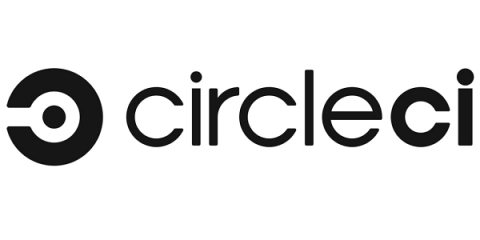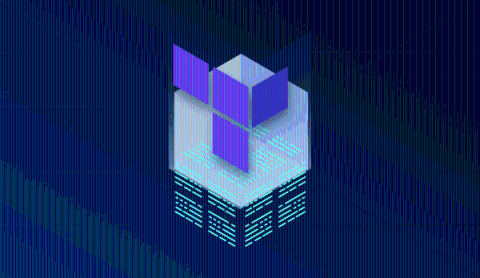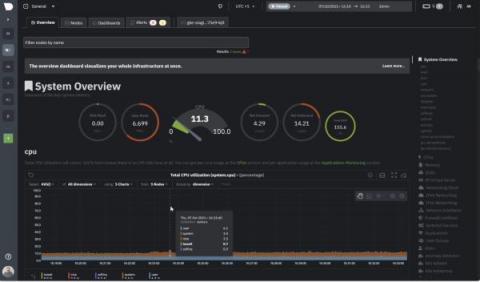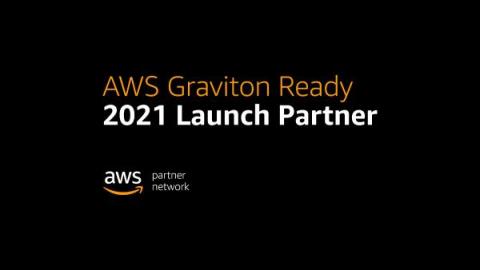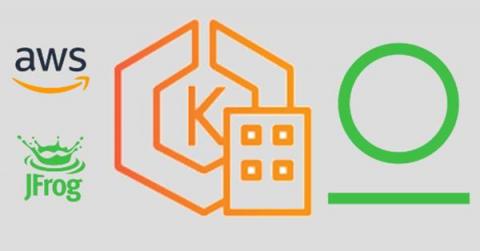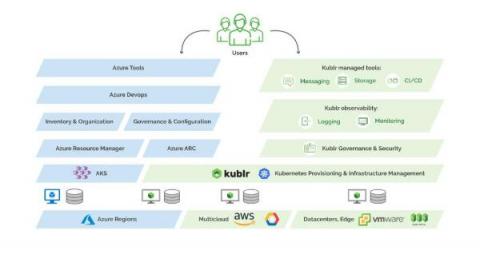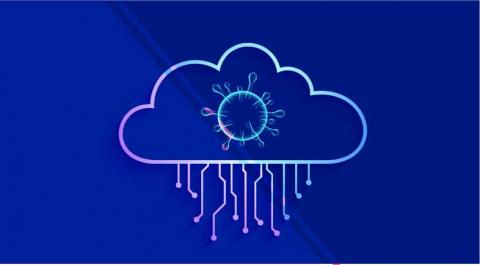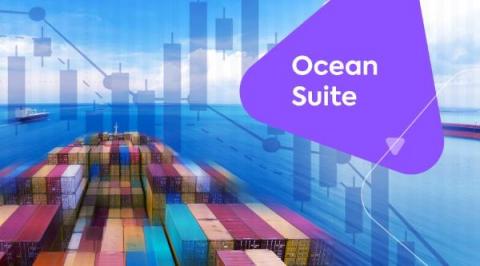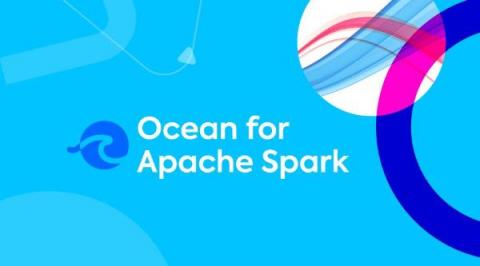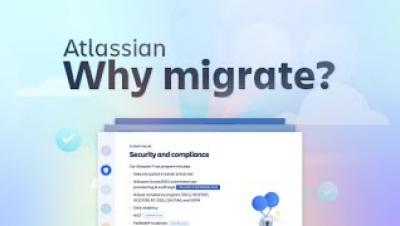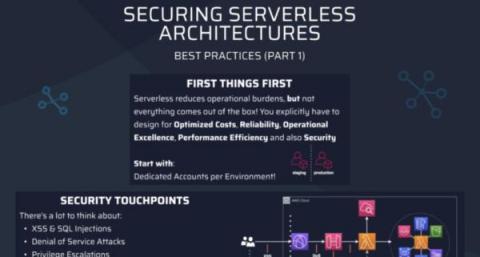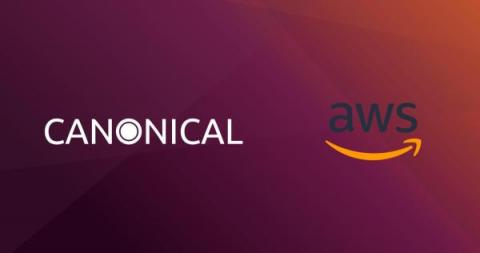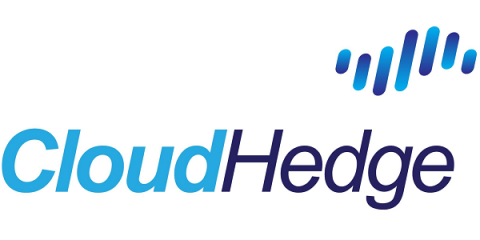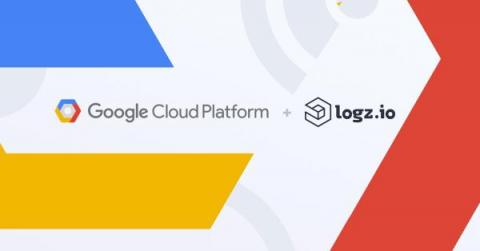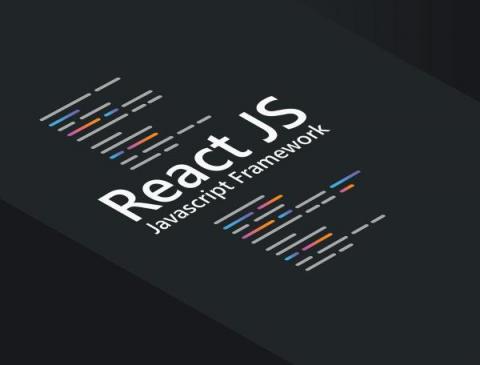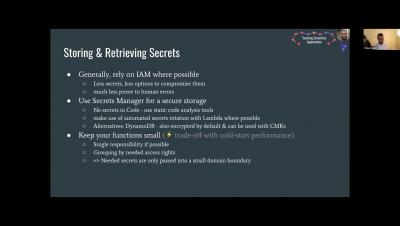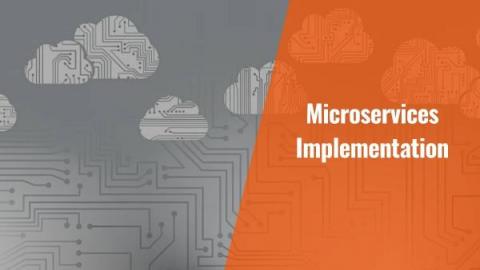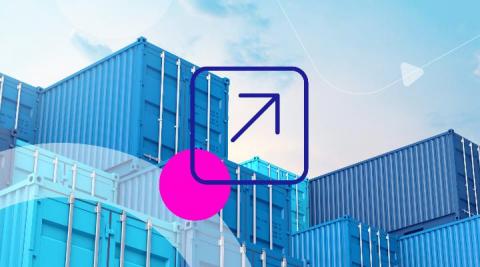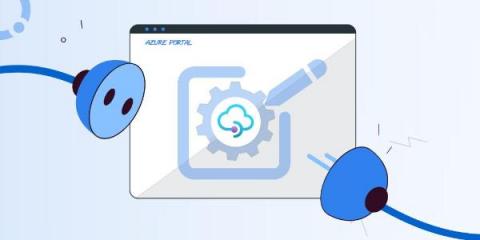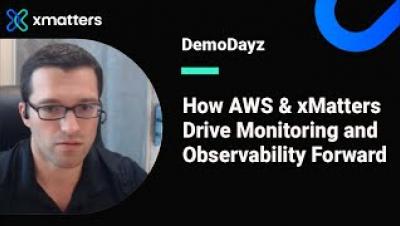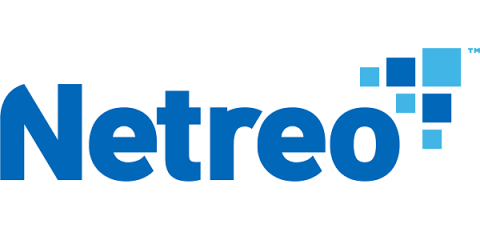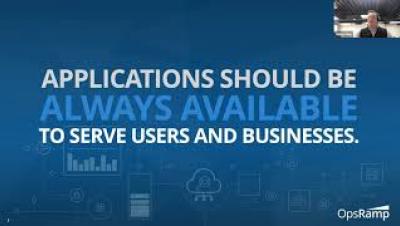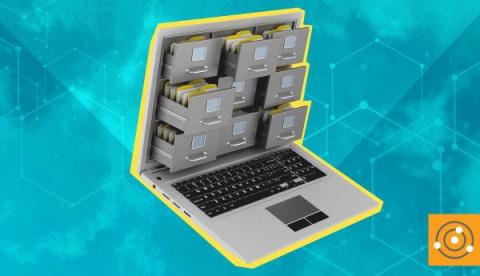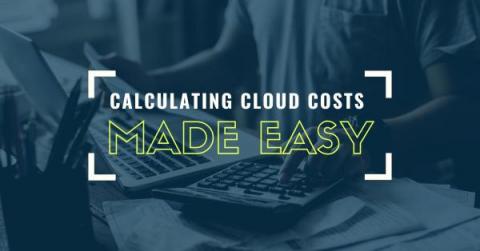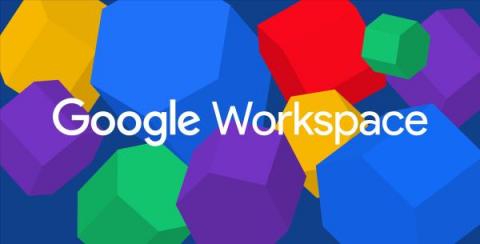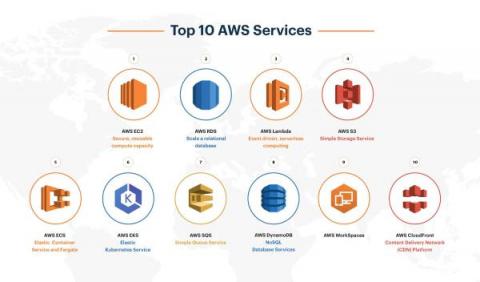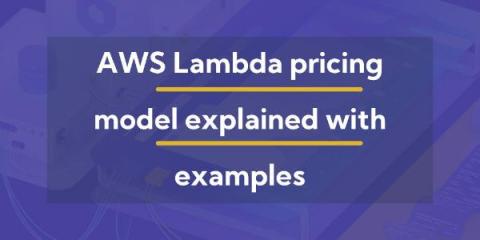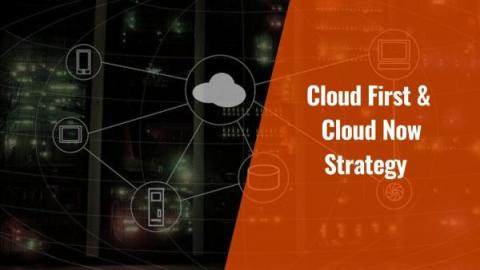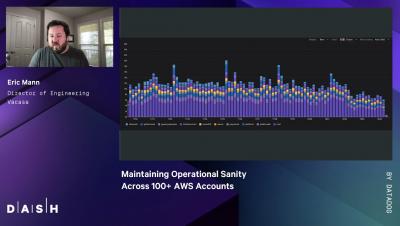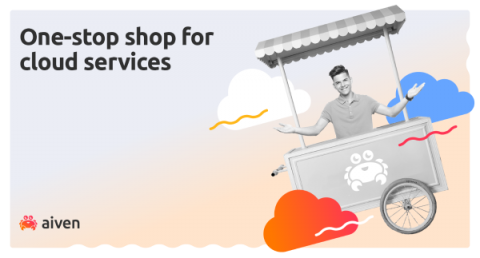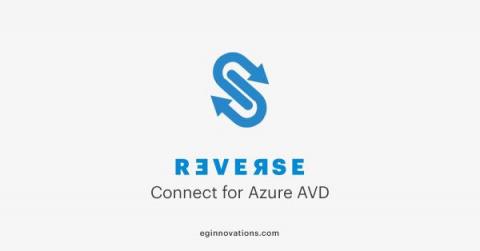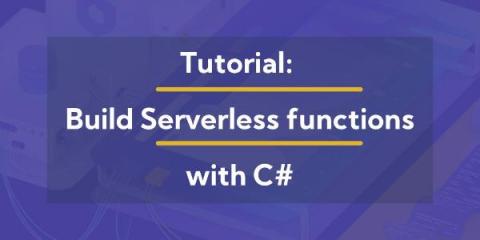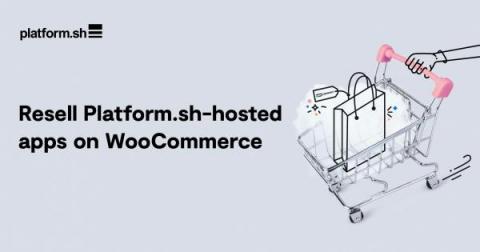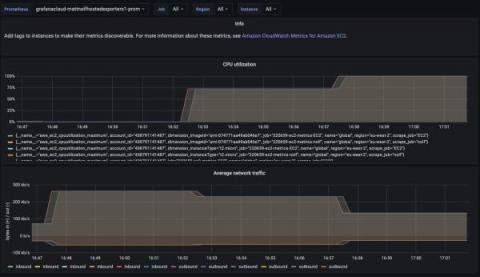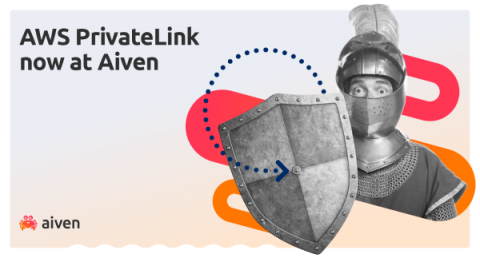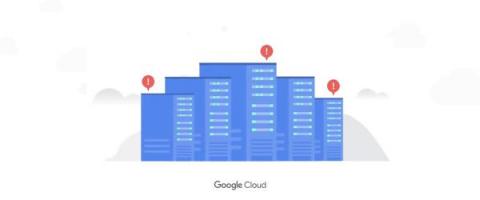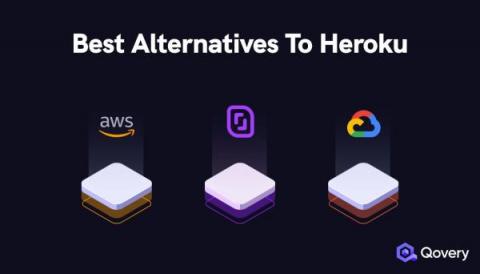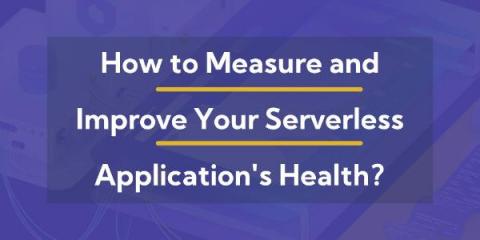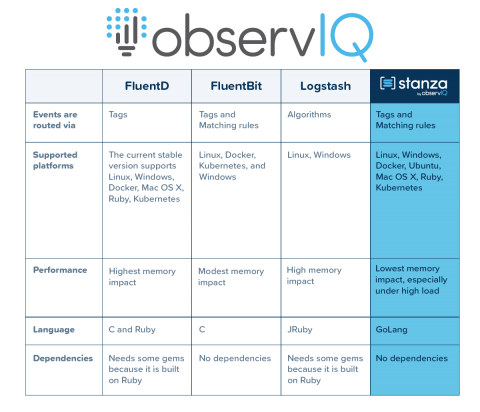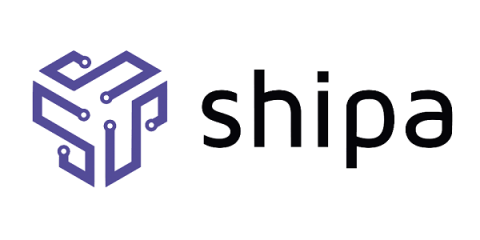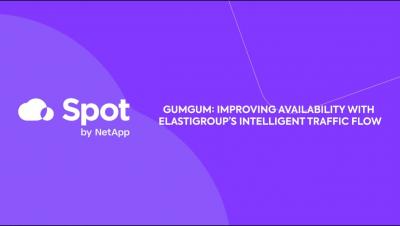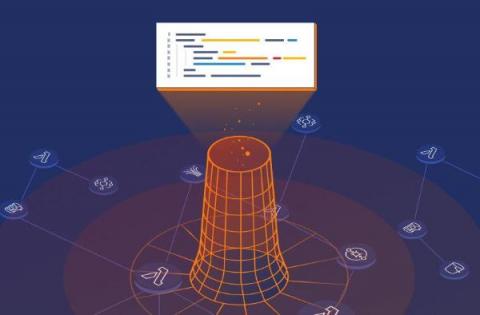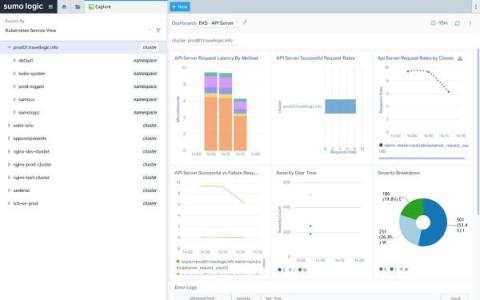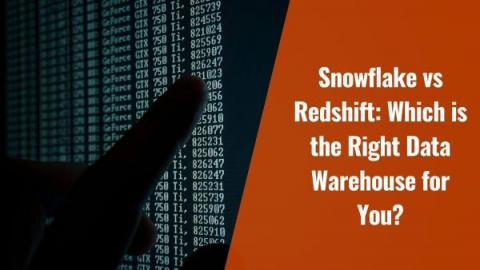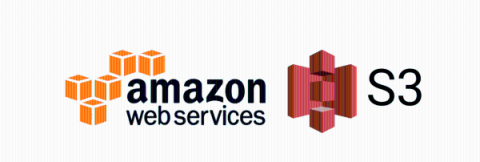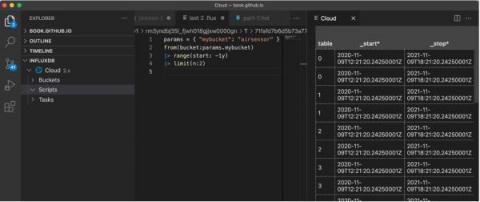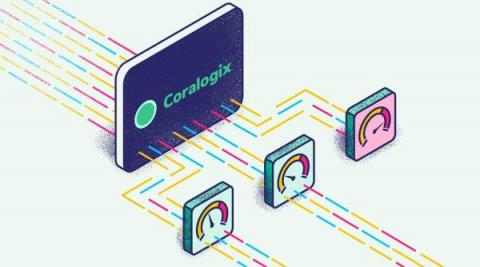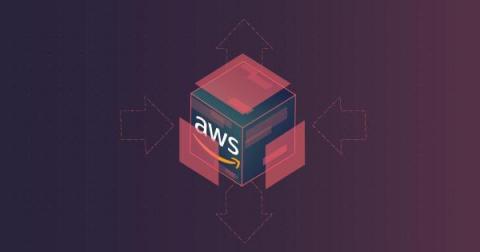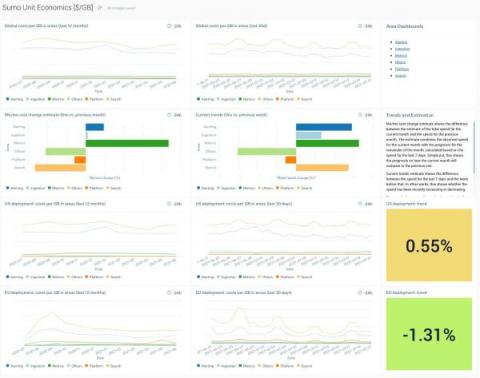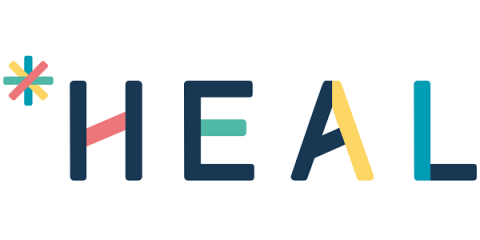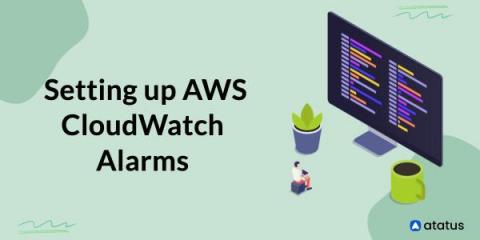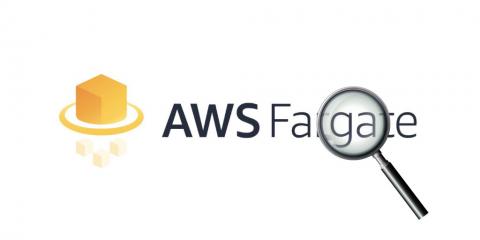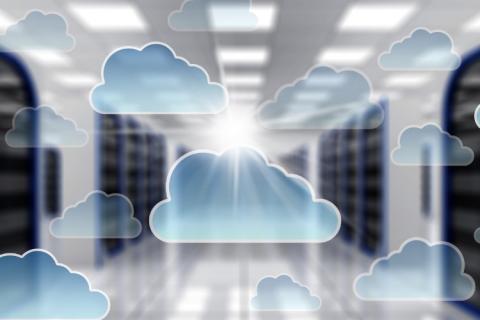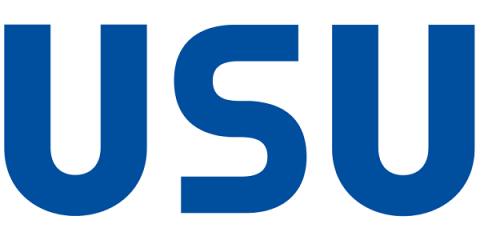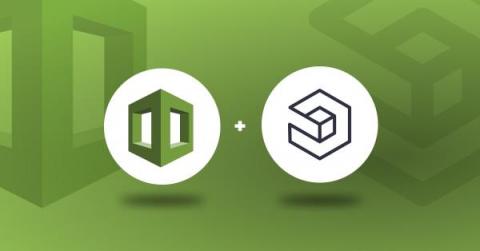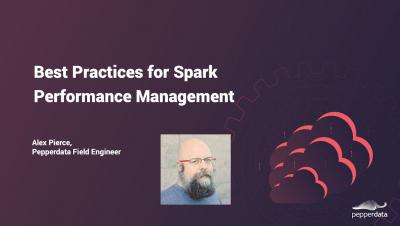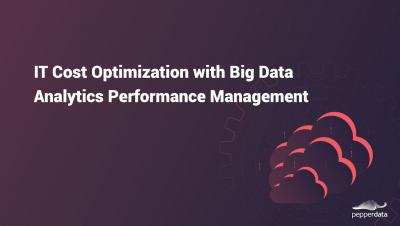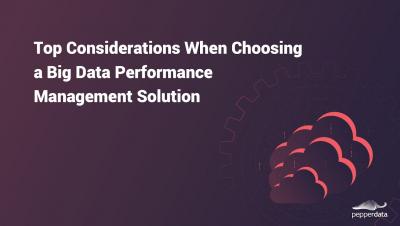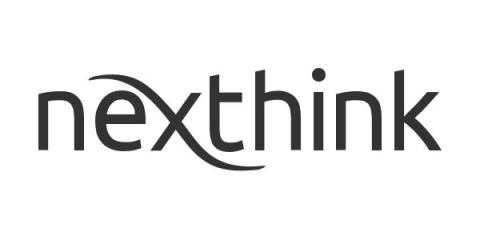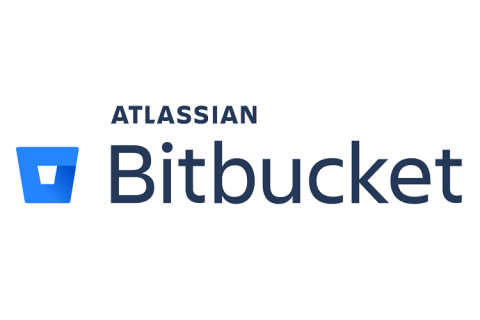Operations | Monitoring | ITSM | DevOps | Cloud
November 2021
How to deploy multiple EC2 instances in one go using Terraform
[Webinar] Solving for multi-cloud visibility in minutes
All-new Netdata Cloud Charts 2.0
Netdata excels in collecting, storing, and organizing metrics in out-of-the-box dashboards for powerful troubleshooting. We are now doubling down on this by transforming data into even more effective visualizations, helping you make the most sense out of all your metrics for increased observability. The new Netdata Charts provide a ton of useful information and we invite you to further explore our new charts from a design and development perspective.
AppDynamics is now an AWS Migration and Modernization Competency Partner
The AWS Migration and Modernization Competency identifies industry leaders with proven technical proficiency and customer success. That's AppDynamics.
Amazon S3: Lake is the New Bus
This is a short blog post about a pattern that we’ve observed more frequently among some of the large enterprises: the use of AWS S3 as both an observability lake and a data bus. AWS S3’s simple API, ubiquitous language support, unmatched reliability and durability, retention options, and numerous pricing plans have made it the de facto standard for storing massive amounts of data.
How We Launched LogStream Cloud on AWS Graviton2
In this post, we’ll walk through our journey of launching Cribl LogStream Cloud on AWS Graviton instances. In order to put our journey into perspective, it is worth spending a few moments to describe the product and its resource requirements.
With AWS EKS Anywhere, DevOps with Artifactory Can Be Everywhere
Kublr Completes Microsoft Validation Program for Azure Arc-enabled Kubernetes and Azure Arc-enabled Kubernetes for Data Services
Enterprises choose Kublr because our platform is designed to be highly flexible and seamlessly integrate with cloud and services players for easy management of customized Kubernetes stacks.
Global pandemic accelerates innovation in the public sector
Having an open, safe and efficient digital administration is the new objective of every Government these years. Although the recent pandemic may have hampered any master plan for system evolution and optimization, there is still some hope. The hybrid Cloud reaches the public sector, among other advances. We’ll tell you all about it in our blog!
Cloud cost management and optimization: How to regain control over your bill
The cloud is today one of the most expensive resources for any modern organization, second only to employee salaries and overhead. According to recent research by Gartner, end-user spending on public cloud services will reach $396 billion in 2021 and grow 21.7% to reach $482 billion in 2022. By 2026, Gartner predicts public cloud spending will exceed 45% of all enterprise IT spending, up from less than 17% in 2021.
Pulsant -The UK's Edge computing platform
Control the complexities of containers with the Ocean Suite for Kubernetes
In the relatively short window of time that Kubernetes has been around, it’s rapidly matured as a critical technology foundation for the cloud, and now even applications that were previously thought to be unviable for containers are running with Kubernetes. As companies expand their usage of it, the need to operationalize Kubernetes with automation and optimization is critical to maintaining speed, agility and control in the long-term.
Ocean for Apache Spark - Serverless Spark now available in preview on AWS
The cloud native revolution brought by Kubernetes has transformed the way we build and deliver software, but the world of big data has for too long been left on the side of this transformation. Thanks to many contributions from the open source community, Apache Spark integration on top of Kubernetes is now officially generally available with the recent releases this year.
Virtana Optimize | Cloud Cost Management Solution
The power of Atlassian Cloud demo teaser trailer
PagerDuty at AWS re:Invent 2021-Deepening Our Collaboration with AWS
Across the globe, in-person technology events are beginning to emerge from their pandemic hibernation. For developers and DevOps teams, no event has been more anticipated than AWS re:Invent, which is back in Las Vegas, November 29th — December 3rd to help bring us all back together and slowly let us find our new normal. While handshakes may be replaced by elbow bumps or other newfound greeting rituals, we are excited to be back and see all of you in real life.
41+ BI Tools Every SaaS Company Needs To Know About
[Infographics] Securing serverless architectures
Serverless reduces a lot of operational burdens, but a ������������ ������������������������ is still your responsibility 🔐 From web threats, over IAM principles to auditing and monitoring.
Cloud Elasticity: What Happens When You Lose Control
In an on-premises environment, you have to pay for the capacity you have regardless of whether you’re using it, and you can’t exceed that capacity without purchasing and provisioning new hardware. In the cloud, however, you have much more flexibility thanks to cloud elasticity, which is the ability to automatically provision or deprovision resources based on workload changes.
Launch Ubuntu Desktop on Google Cloud
This tutorial shows you how to set up a Ubuntu Desktop on Google Cloud. If you need a graphic interface to your virtual desktop on the cloud, this tutorial will teach you how to set up a desktop environment just like what you can get on your own computer. We need four steps to set up a machine.
Canonical Achieves AWS Graviton Ready Designation
29 November 2021: Canonical, Publisher of Ubuntu, announced today that it has achieved the AWS Graviton Ready designation, part of the Amazon Web Services, Inc. (AWS) Service Ready Program. This designation recognizes that Canonical + Ubuntu Server and Anbox Cloud Appliance has demonstrated successful integration with AWS Graviton Service.
CloudHedge Technologies Achieves AWS Migration and Modernization Competency Status
Plano, Texas – 29th November, 2021 – CloudHedge Technologies, Inc, announced today that it has achieved Amazon Web Services (AWS) Migration and Modernization Competency status for AWS Partners. This designation recognizes that CloudHedge’s App Modernization platform—OmniDeq™ powered by R6Ai™— has demonstrated technical proficiency and proven customer success automating and accelerating customer application migration and modernization journeys.
GCP Integrations for Metrics with Logz.io
Logz.io has dedicated itself to encouraging and supporting cloud-native development. That has meant doubling down on support for AWS and Azure, but also increasing our tie-ins with Google Cloud Platform – GCP. Recently, our team added dozens of new integrations for metrics covering the gamut of products in the GCP ecosystem.
Create a Reusable Text Input With React Hook Form
Sometimes, managing several input fields gets crazy complex. You may need to recreate the same thing for each form and that’s can be really time-consuming. With a reusable Text Input in React, you can create just one input element in just one component and reuse it everywhere in any form. Let’s do this.
Deploy Friday: E82 Enabling conversation - the design and linguistics of API documentation
Do you need a business case to migrate to the cloud? The answer is clear!
Summary The cloud is always innovating. One of the more recent and large breakthroughs has been the advancement and improvements in CPU architectures. Specifically with ARM CPU processors, where we are seeing adoption across all forms of computing, not only cloud, but also laptops with Apple’s M1, and of course in the past decade with mobile phones. The more recent availability in cloud computing therefore is not surprising, given the progress made in all other areas of technology.
Dashbird explained
Azure Security Tips & Tricks
Securing enterprise-level Serverless applications
You can find more resources and articles about serverless on our blog: https://dashbird.io/blog/
Kubernetes Master Class GitOps and Fleet Multi Cluster CD with EKS, GKE and AKS
5 Best Practices for Successful Microservices Implementation
Microservices have significantly altered the architecture of server-side processors. Rather than a single massive monolithic codebase containing all of your application’s business logic, microservices adhere to the distributed systems concept, in which a collection of application components collaborate to meet business goals. You may create a streamlined microservices ecosystem free of superfluous architectural complications by adhering to microservices industry standards.
Announcing support for Windows containers on AWS Fargate
AWS Fargate is a serverless compute engine that allows you to deploy containerized applications with services such as Amazon ECS without needing to manage the underlying virtual machines. Deploying with Fargate removes operational overhead and lowers costs by enabling your infrastructure to dynamically scale to meet demand. We are proud to partner with AWS for its launch of support for AWS Fargate on Windows containers.
Development workflows and setups for serverless
You can find more resources and articles about serverless on our blog: https://dashbird.io/blog/
Monitoring large scale serverless applications
You can find more resources and articles about serverless on our blog: https://dashbird.io/blog/
Ocean Headroom Explained - Launch pods without delay!
The dynamic nature of cloud native applications is both a blessing and a curse. The ability to use compute, storage, and network resources without managing physical hardware is a real blessing. Your applications can take advantage of the seemingly limitless resources available in the public cloud. Unfortunately, the curse becomes clear when the bill arrives! It is a significant CloudOps challenge to find the balance between providing optimal application performance and minimizing cost.
How to rename an API Connection thru the Azure Portal
BSO joins OVHcloud's trusted partner ecosystem as Advanced Partner with its BSO Plus offering
Announcing support for Graviton2-powered AWS Fargate deployments
AWS Fargate is a serverless compute engine that allows you to deploy containerized applications on services like Amazon ECS without needing to provision or manage compute resources. Now, Datadog is proud to be a launch partner with Amazon for their support of AWS Fargate workloads running on Graviton2, Amazon’s proprietary ARM64 processor.
How AWS & xMatters Drive Monitoring and Observability Forward - xMatters Demo
We're Thrilled To Share - Coralogix has Received AWS DevOps Competency
At Coralogix, we believe in giving companies the best of the best – that’s what we strive for with everything we do. With that, we are happy to share that Coralogix has received AWS DevOps Competency! Coralogix started working with AWS in 2017, and our partnership has grown immensely in the years since. So, what is our new AWS DevOps Competency status, and what does it mean for you?
Turbocharging AKS networking with Calico eBPF
A single Kubernetes cluster expends a small percentage of its total available assigned resources on delivering in-cluster networking. We don’t have to be satisfied with this, though—achieving the lowest possible overhead can provide significant cost savings and performance improvements if you are running network-intensive workloads.
7 Cloudability Alternatives For Cloud Cost Management (Updated 2021)
Cloud Monitoring Best Practices: 5 to Adopt
An exponential increase in the generation of data led to the rise of the Big Data era. Among other factors, the cost of scaling up businesses to accommodate so much data prompted many businesses to switch to virtual cloud platforms. The cloud can store, organize, and manage all the data and applications for a company in a virtual environment. Monitoring this environment is crucial, because it’s susceptible to cyberthreats, like data breaches.
Cloud-optimized Linux kernels - what makes Ubuntu the top OS across the clouds
Ubuntu is the platform of choice for deploying and running workloads on public clouds. No other operating system gives you better performance and consistency of experience across public clouds, including Amazon, Azure, Google, IBM and Oracle. There is a reason behind this exceptional experience. By design, Ubuntu images in public clouds include an optimized Linux kernel for each cloud, giving you the best performance and functionality across all instance types and services.
How Sabre is using SRE to lead a successful digital transformation
Editor’s note: Today we hear from Kenny Kon, an SRE Director at Sabre. Kenny shares about how they have been able to successfully adopt Google’s SRE framework by leveraging their partnership with Google Cloud. As a leader in the travel industry, Sabre Corporation is driving innovation in the global travel industry and developing solutions that help airlines, hotels, and travel agencies transform the traveler experience and satisfy the ever-evolving needs of its customers.
Solving For Multi-Cloud Visibility With OpsRamp
Visualizing K8s & OpenShift CPU+Memory Risks to Performance & Cost
How the U.S. State Department Can Overcome the Trade-Offs of its Multi-Cloud Strategy
Three Tactics to Boost SaaS Performance (and One that Saves Money)
It’s a digital world—we just work and play in it...Unless, of course, you work in the IT group responsible for digital experience. Then you also have nightmares in it. Here’s why.
Is FinOps All Talk and No Walk?
I am a big proponent of cross-functional alignment, as I remnded our ELT at a recent off-site meeting. There’s a lot of buzz about FinOps bringing financial accountability to cloud spend by eliminating procurement siloes and implementing cross-functional best practices. As the CFO of a SaaS company, I fully support this practice. In fact, Virtana recently made some changes to our cloud infrastructure as part of our own evolution.
The Different Types Of Cloud Deployment And Their Pros And Cons
Cloud computing is the on-demand availability of computer system resources without direct active management by the user. Instead, the delivery of said resources is available over the internet, which has made cloud computing a popular digital service that various industries use to operate and manage work tasks. How cloud computing services are implemented, hosted and accessed by users is called cloud deployment. There are different types of deployments, each with defined advantages for users.
Galileo Cloud Compass Makes Calculating Cloud Costs EASY
Overcoming Common Serverless Challenges in Production
Key Tenets of DX (Digital Transformation)
Create Ocean clusters with eksctl
Deploy Friday: E81 From customer to team member - meet the team that crossed the line
Five worthy reads: Desktop as a Service (DaaS)-Goodbye PCs, hello "desktops" in the cloud
Five worthy reads is a regular column on five noteworthy items we’ve discovered while researching trending and timeless topics. This week, we explore the rise of DaaS services across organizations, and the role it could play in the hybrid workplace of tomorrow. When we last wrote about the era of Everything as a service (XaaS), Desktop as a Service (DaaS) was still a relatively niche concept.
Monitor Google Workspace with Datadog
Google Workspace (formerly G Suite) is a collection of cloud-based productivity and collaboration tools developed by Google. Today, millions of teams use Google Workspace (e.g., Gmail, Drive, Hangouts) to streamline their workflows. Monitoring Google Workspace activity is an essential part of security monitoring and audits, especially if these applications have become tightly integrated with your organization’s data.
School Security in 2021: Hybrid-Cloud, Device Management Driving IT Challenges
Coming into the new school year, school IT leaders are experiencing many of the same challenges that other industries have faced since transitioning to remote and hybrid models. Most notably, an ever-growing number of devices, SaaS applications, and hybrid- or multi-cloud environments has strained a largely decentralized approach to IT management that simply can’t keep up with the demands of a modern organization.
Top 10 AWS Services Explained With Use Cases
Amazon Web Services (AWS) is one of the most comprehensive and broadly adopted cloud service providers in the industry, offering over 200 fully featured services from data centers globally. A large spectrum of clients across verticals uses AWS to lower costs, become more agile and innovate faster. A recent survey estimates that AWS is the largest cloud service provider and accounts for 32% of the worldwide cloud services market.
What Are On-Demand Instances And When Should You Use Them?
AWS Lambda Pricing Model Explained With Examples
In this article we’ll go through the ins and outs of AWS Lambda pricing model, how it works, what additional charges you might be looking at and what’s in the fine print. Money makes the wold go round. Unfortunately, it is a necessity in almost all spheres of life. You can live without it or with lesser amounts of it, but it makes it all harder. If you wish to have it, first, you need to give it, as always. Even AWS Lambda is not free.
Why Cloud First and Cloud Now is The Most Urgent Business Strategy for You?
Without a doubt, cloud technology has saved numerous organizations from disruption. According to a report published by Allied Market Research, In 2019, the global cloud services market was valued at $325,689 million and is expected to reach $1,620,597 million by 2030, registering a CAGR of 15.8%. The pandemic has amplified the growth of the cloud service market.
Cloud Resource Optimization Subscription Service
Maintaining Operational Sanity Across 100+ AWS Accounts | Eric Mann / Ryan Tomac (Vacasa)
CloudOps: the everyday heroes
Reverse Connect for Azure Virtual Desktops (AVD)
There’s something common between AVD and eG Enterprise. Can you take a wild guess? Listening on open TCP ports is an extremely bad practice for cloud architectures, as it exposes products and services to accepting incoming messages from malicious parties. This is something eG Innovations avoids in our own products (see details). This is also a best practice adopted by Microsoft for Azure Virtual Desktops (AVD).
Incident Review - Google Cloud Outage has Widespread Downstream Impact
Outages on the Internet always catch you by surprise, whether you are the end user or the Head of SRE or DevOps trying to keep a clear mind while you execute your incident playbook. As people in charge of ensuring reliable services for our customers, our normal experience of outages involves surfing a deluge of fire alarms and video calls as we work to solve the problem as quickly as we can. We often forget, therefore, what an outage means to the end user.
Tutorial: Build Serverless functions with C#
The world of cloud computing has been revolutionized by a solution called serverless computing. It has been an absolute joy for developers to use. Before this innovation, developers had to worry about the resources powering their code. Since the launch of serverless computing, the developer’s focus on operating-system and hardware architecture is now a thing of the past. It handles all the server management while focusing on what you do well — writing good quality code.
Resell Platform.sh-hosted apps on WooCommerce
Many software developers build their product on Platform.sh. You can take several approaches, some of which are very straightforward. For instance, you can become a member of our Agency Partner Program. Or you can take advantage of our White-label offering to deliver a fully functional, fully-featured Platform.sh PaaS, branded with your organization’s logo.
Best Practices for Cloud Monitoring
Introducing the AWS CloudWatch integration, Grafana Cloud's first fully managed integration
At Grafana Labs, we are continuing to build integrations that make it easier than ever to observe your systems, no matter which tools or software you choose. Today, we’re excited to talk about the latest integration available in Grafana Cloud: the AWS CloudWatch metrics integration, the first of our fully managed integrations that makes it simple to connect and visualize your data in Grafana.
Deploying your first Serverless REST API within minutes
Announcing support for AWS PrivateLink
A Simple Guide to Taming the Beast That Is Kubernetes
Lower Your Google Cloud Costs with These 5 Google Dataproc Best Practices
Thinking about using Google Dataproc as your cloud vendor? We can see why. Google Dataproc is a powerful tool for analytics and data processing, but to get the most out of it you have to ensure you use it properly. We’re going to explore five best practices you can use to lower your Google cloud costs while maximizing efficiency: Following these tips will ensure the best performance and help keep your cloud costs in line.
Markerstudy Group leverages investment in Citrix Cloud Services and IGEL OS to deliver a 'hybrid' future of office and home working
Get planet-scale monitoring with Managed Service for Prometheus
Prometheus, the de facto standard for Kubernetes monitoring, works well for many basic deployments, but managing Prometheus infrastructure can become challenging at scale. As Kubernetes deployments continue to play a bigger role in enterprise IT, scaling Prometheus for a large number of metrics across a global footprint has become a pressing need for many organizations.
Best Heroku Alternatives for 2022
So you’ve just created a new project and want to start distributing it, but you still don’t know how to manage its deployment. Then there’s the monitoring, network request, and a lot of other problems related to modern apps. At the same time, you want to avoid working directly with AWS due to its intricacy.
Understanding AWS EC2 Billing: Ways To Optimize Your Costs
How to Measure and Improve Your Serverless Application's Health
This article will cover how the health of your serverless application can be measured and improved. Technology and its implementation methodology evolve with time very rapidly. Cost efficiency and productivity are the key drivers of technological evolution these days. With the advent of the cloud, infrastructure costs have been brought down significantly. Serverless technology adds icing to the cake!
New Platform.sh overview video: a proven, 5-step approach helps explain a complex concept
The question that people who don’t know us constantly ask, “What does Platform.sh do, exactly?” Our new overview video aims to answer just that. We took a five-step approach to ensure our message was both clear and succinct: We hope that this video addresses the question about what Platform.sh does and inspires you to use the same five-step framework when you’re tasked with explaining a difficult concept.
Deploy Friday: E80 Sylius - the enterprise open-source e-commerce platform
How to set up Stanza as the log agent for your GCP?
Stanza is a robust log agent. GCP users can use Stanza for ingesting large volumes of log data. Before we dive into the configuration steps, here’s a matrix detailing the functional differences between all the common log agents used by GCP users. Stanza was built as a modernized version of FluentD, Fluentbit, and Logstash. GCP users now have the ability to install Stanza to their VMs/ GKE clusters to ingest logs and route them to GCP log explorer.
Cloud Economics - And The Cloud Cost Metrics You Should Be Tracking
Shipa Cloud Updates
I’m sure most of us have heard this saying before, and if you are in the DevOps space, I’m sure this is a scenario that you deal with daily. Most of us started even before we even had all these nice terms, such as DevOps, SREs, DevSecOps, and so many others, when we were all Sys Admins.
Advanced Service Bus Dead lettering with BAM
GumGum Automates and Optimizes Operations in the Cloud
GumGum: Improving Availability with Elastigroup's Intelligent Traffic Flow
Serverless Observability: It's easier than you think!
Observability is a measure of how well the internal state of a system can be inferred from its external outputs. It helps us understand what is happening in our application and troubleshoot problems when they arise. It’s an essential part of running production workloads and providing a reliable service that attracts and retains satisfied customers.
Why and how to monitor AWS EKS
Snowflake vs Redshift: Which is the Right Data Warehouse for You
A plethora of surveys has shown that there is significant growth in the digital data that enterprises generate every day and it is becoming difficult for traditional on-premise systems to cope up with the enormous amounts of data. Also, the old methods require huge capital and resources. Therefore, Cloud-based Data Warehouses are taking the place of traditional ones to collect, store and analyze data coming from multiple sources.
Store and retrieve static assets on AWS S3 with NodeJS on FlashDrive
AWS S3 is a cloud storage service that saves data as an object associated with a key. Objects are like files and keys are like filenames. Objects are stored in a bucket. We will be auto-generating our object keys while uploading. In a free tier account, you get 5GB of free cloud storage with AWS S3. Note: This tutorial is made for AWS S3 but works as well with S3 compatible providers like Wasabi.com
Monitor Azure Government with Datadog
Azure Government is a dedicated cloud for public sector organizations that want to leverage Azure’s suite of services in their highly regulated environments. As these organizations migrate their applications to Azure Government, they need to ensure that they can maintain visibility into the status and health of their entire infrastructure.
New Ocean feature - minimum nodes per Virtual Node Group
Spot by NetApp’s Ocean continually optimizes a Kubernetes cluster’s data plane. When Ocean identifies nodes that aren’t being fully utilized, it simulates various bin packing scenarios. Once a more efficient layout is identified, Ocean reschedules pods, and then gracefully terminates the underutilized nodes. Ocean’s continuous optimization of cluster infrastructure saves your organization money and is better for planet Earth!
Enabling SRE best practices: new contextual traces in Cloud Logging
The need for relevant and contextual telemetry data to support online services has grown in the last decade as businesses undergo digital transformation. These data are typically the difference between proactively remediating application performance issues or costly service downtime. Distributed tracing is a key capability for improving application performance and reliability, as noted in SRE best practices.
Epsagon-to-Lumigo: a step-by-step migration guide
At Lumigo. we believe in serverless technology, and our mission is to make serverless development easy and fast. For the past few months, we’ve been extending our observability and debugging capabilities, making it a breeze for developers to understand the end-to-end story of every request that goes through the system, find the root causes of issues and be able to easily address them.
3 Improvements Finance Teams Can Make To Their FP&A Process
Cloud Infrastructure Without the Headaches
Cloud infrastructures have introduced increasing levels of complexity—you have to manage workloads across on-premises, private, and multiple public cloud environments. This requires you to migrate efficiently, optimize effectively, and stay rightsized on an ongoing basis, all while meeting evolving business requirements. With so many moving parts, it can be a massive challenge with lots of pitfalls that can cost you time and money and even put your business results in jeopardy.
TL;DR InfluxDB Tech Tips: API Invokable Scripts in InfluxDB Cloud
If you’re familiar with InfluxDB Cloud, then you’re probably familiar with Flux already. Flux enables you to transform your data in any way you need and write custom tasks, checks, and notification rules. But what you might not know is that InfluxDB Cloud now supports API Invokable Scripts in Flux.
Limit Coralogix usage per account using Azure Functions
At Payoneer, we use Coralogix to collect logs from all our environments from QA to PROD. Each environment has its own account in Coralogix and thus its own limit. Coralogix price modules are calculated per account. We as a company have our budget per account and we know how much we pay per each one. In case you exceed the number of logs assigned per account you will pay for the “extra” logs. You can see the exact calculation in this link.
Cycle Podcast | Episode 9 "Equinix Metal + Cycle.io" Featuring Zachary Smith, Managing Director
Pepperdata Lets AWS Auto Scaling Execute More Big Data Workloads
Here at Pepperdata, we continuously work to improve our products and better serve our customers. Whether it’s executing more big data workloads or ensuring their resource consumption remains optimal, we want our customers to get the best value and tangible benefits from our products while not overshooting their big data cloud budgets. Today, we’re bringing you the data to back up our claims that all of this is possible.
How Sumo Logic monitors unit economics to improve cloud cost-efficiency
CIS-Harden your Ubuntu in Google Cloud
CIS Benchmarks are best practices for the secure configuration of a target system. The Center for Internet Security, Inc. (CIS®) is the authority backing CIS Benchmarks. Ubuntu Pro is entitled to be CIS compliant and packaged with CIS toolings from Canonical. Let’s SSH into your Ubuntu Pro virtual machine. If you haven’t yet upgrade your Ubuntu LTS to Ubuntu Pro, please follow this tutorial.
Cloud Computing; Basic Walk-through
Cloud computing is the on demand delivery of IT solutions. Instead of investing capital in buying, owning, and maintaining physical servers and data centers, cloud computing enable the organizations to access the services such as, computing, storages, and databases, whenever required from the desired cloud providers. Now, let us move ahead and have a look at some of the key benefits of cloud computing.
Leaning on Technology in The New Noisy: Managing Cloud, Change and Risk
Serverless Cost Optimization: 4 Ways To Lower Your Costs
Strengthen Your Cloud Ops with Preventive Healing
The cloud is driving enterprise digital transformation. Gartner predicts that by 2026, public cloud spending will exceed 45% of all enterprise IT spending, a 2.5x growth from 2021. Enterprises globally are accelerating application modernization, embracing the cloud. This is giving rise to a few key trends. Software-as-a-Service (SaaS) adoption is on the rise. So, organizations are using applications whose implementation/infrastructure they have little or no control over.
Can A Cloud Managed Service Provider Turn Your Digital Transformation Dream Into A Reality?
The cloud has changed the world of IT — including IT services. In particular, it has enabled companies to dramatically decrease the amount of infrastructure they manage on-premises — reducing their need to use outside IT services to help them purchase, set up and maintain this infrastructure.
Deploy Friday: E79 The Long and Winding Road towards security compliance
Azure Thames Valley: A journey into DevOps
AWS CloudWatch Alarms - A Startup Guide
While more businesses are moving their apps to the cloud, they must also ensure that cloud-based services such as Amazon Web Services (AWS) and other resources remain available. So, how can you make sure these cloud services aren't turned off? You can accomplish this using a tool like Amazon CloudWatch, which monitors applications. What is AWS CloudWatch will be the subject of this article.
Innovations in cloud network security
Migrate and Modernize: How to Upgrade Your DevOps as You Move to the Cloud
AWS Fargate Monitoring
How do you perform AWS Fargate monitoring? Today, we’ll discuss the background of AWS Fargate and using Retrace to monitor your code. As companies evolve from a monolithic architecture to microservice architectures, some common challenges often surface that companies must address during the journey. In this post, we’ll discuss one of these challenges: observability and how to do it in AWS Fargate.
Corporate vs Remote SaaS Performance
Eight Reasons Enterprise Automation is Vital to Cloud Strategy Success
The cloud and Electric Vehicles (EVs) have a lot in common. Both are modern, fast, and agile. Both are also in great demand. Every street seems to have an EV parked somewhere. It’s the same with the cloud, which is fast becoming the platform of choice to power enterprise applications. Whether it is public, private, or hybrid, the cloud offers flexibility, security, and low total cost of ownership.
Best practices for Cloud Operations in the enterprise
Bitbucket Cloud has landed in AWS
Hybrid Multi-Cloud Demands Holistic Observability
As I said before, Speed is King. Business requirements for applications and architecture change all the time, driven by changes in customer needs, competition, and innovation and this only seems to be accelerating. Application developers must not be the blocker to business. We need business changes at the speed of life, not at the speed of software development.
USU wins leading European retail group as a new customer for SAP® license management
United Living turns to IGEL to reduce EUC costs, connect site offices and enable home working
EDB Announces General Availability of BigAnimal, PostgreSQL Database in the Cloud
Introducing Google Cloud Managed Service for Prometheus
Perfect Your Cloud's Deployment with Logz.io & AWS CloudFormation Public Registry
AWS CloudFormation is a service that enables you to create and provision AWS infrastructure deployments predictably and repeatedly. This helps you leverage AWS products such as EC2 instances, Amazon Elastic Block Store, Amazon SNS, Elastic Load Balancing, and Auto Scaling to build highly reliable, highly scalable, cost-effective applications in the cloud – without worrying about creating and configuring the underlying AWS infrastructure.
Spark Performance Management Optimization Best Practices | Pepperdata
How to Optimize Spark Enterprise Application Performance | Pepperdata
How to Maximize the Value Of Your Big Data Analytics Stack Investment
How DevOps Can Reduce the Runaway Waste and Cost of Autoscaling
Learn How to Simplify Kubernetes Performance Management | Pepperdata
Big Data Performance Management Solution Top Considerations
We raised $29 million in new funding. Here's what we're going to do with it
Today we are announcing an additional $29 million in funding to help Lumigo grow and provide the same powerful observability capabilities we brought to serverless to other cloud-native technologies, including containers and Kubernetes. Lumigo was founded by Aviad Mor and me a few years ago because we believed the world would be rapidly moving to cloud-native architectures and that these technologies are transformative. Our goal was to create the tools that help developers realize this vision.
5 Sustainable IT Practices for Your SaaS Applications
With web browser-accessed applications reaching record levels, employees are now spending most of their productive work time inside a cavern of business web applications. These may be custom applications built by a company for specific business purposes, or commercial SaaS applications for important functions such as collaboration, workflow management, scheduling, communication, transactional business, single sign-on, development, service desk, CRM, HR, and others.
What is Microsoft Azure Portal and its Benefits?
With the help of its continually growing global network of data centres, Microsoft has developed Azure, a cloud platform for developing, deploying, and managing services and applications from any location. Azure is available now. Azure’s platform as a service (PaaS) approach allows you to add cloud capabilities to your current network, while its infrastructure as a service (IaaS) model allows you to entrust Microsoft with all of your computing and network requirements (IaaS).
Data on Azure -What, When, How?
Application Modernization With Azure
Announcing the Bitbucket Cloud Migration Assistant
The 3 Best Ways To Talk To Your C-Suite About Cloud Costs
More Clouds, More Tools, More Problems
Organizations need tools to manage their infrastructure, which today is expanding beyond the data center to include multiple public clouds. In fact, in a recent survey of hybrid cloud decision makers, we found that the vast majority of respondents (88%) have placed more than one-quarter of their workloads in the public cloud, and 44% indicated that they’re running more than half of their workloads in the public cloud.
Ubuntu Pro-based Microsoft SQL Server Instances available for Azure
1st November 2021: Today, Canonical announced support with Microsoft for Microsoft SQL Server with Ubuntu Pro on Microsoft Azure. Canonical has worked with Microsoft to bring a highly performant and fully supported solution for SQL Server to market, based around the Ubuntu Pro 20.04 LTS operating system.
Securing the Open-Source supply chain with Ubuntu Pro on Google Cloud
It’s official: since the outbreak of the COVID-19 pandemic, cybercrime has increased by 600%. Among these, ransomware attacks are estimated to cost $6 trillion in 2021 alone. And there were nearly 550,000 ransomware attacks per day in 2020. The question is: are your workloads secure enough? In this blog, we will discuss how to make your Open Source workloads more secure in one second.


